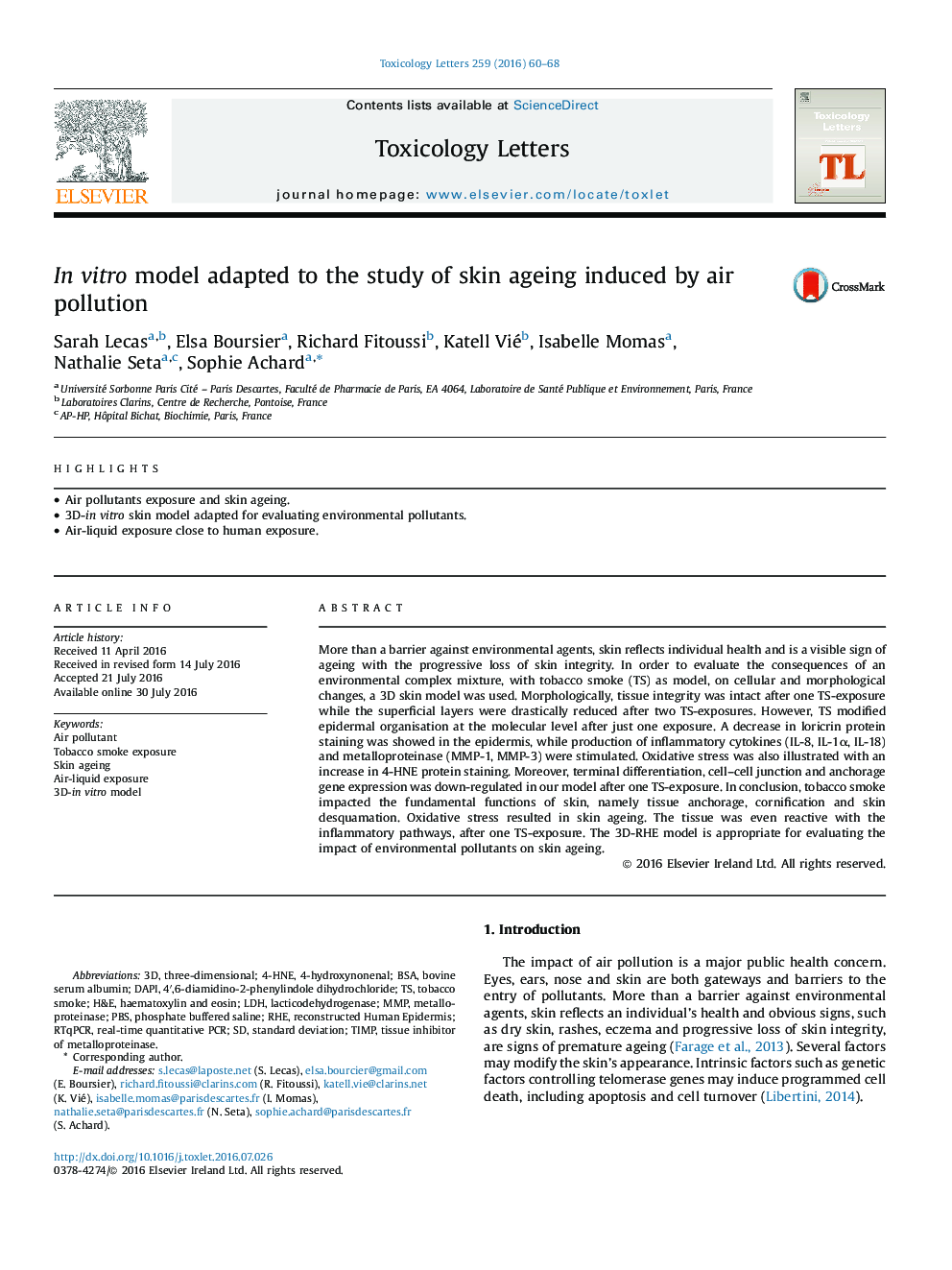| Article ID | Journal | Published Year | Pages | File Type |
|---|---|---|---|---|
| 5859690 | Toxicology Letters | 2016 | 9 Pages |
â¢Air pollutants exposure and skin ageing.â¢3D-in vitro skin model adapted for evaluating environmental pollutants.â¢Air-liquid exposure close to human exposure.
More than a barrier against environmental agents, skin reflects individual health and is a visible sign of ageing with the progressive loss of skin integrity. In order to evaluate the consequences of an environmental complex mixture, with tobacco smoke (TS) as model, on cellular and morphological changes, a 3D skin model was used. Morphologically, tissue integrity was intact after one TS-exposure while the superficial layers were drastically reduced after two TS-exposures. However, TS modified epidermal organisation at the molecular level after just one exposure. A decrease in loricrin protein staining was showed in the epidermis, while production of inflammatory cytokines (IL-8, IL-1α, IL-18) and metalloproteinase (MMP-1, MMP-3) were stimulated. Oxidative stress was also illustrated with an increase in 4-HNE protein staining. Moreover, terminal differentiation, cell-cell junction and anchorage gene expression was down-regulated in our model after one TS-exposure. In conclusion, tobacco smoke impacted the fundamental functions of skin, namely tissue anchorage, cornification and skin desquamation. Oxidative stress resulted in skin ageing. The tissue was even reactive with the inflammatory pathways, after one TS-exposure. The 3D-RHE model is appropriate for evaluating the impact of environmental pollutants on skin ageing.
